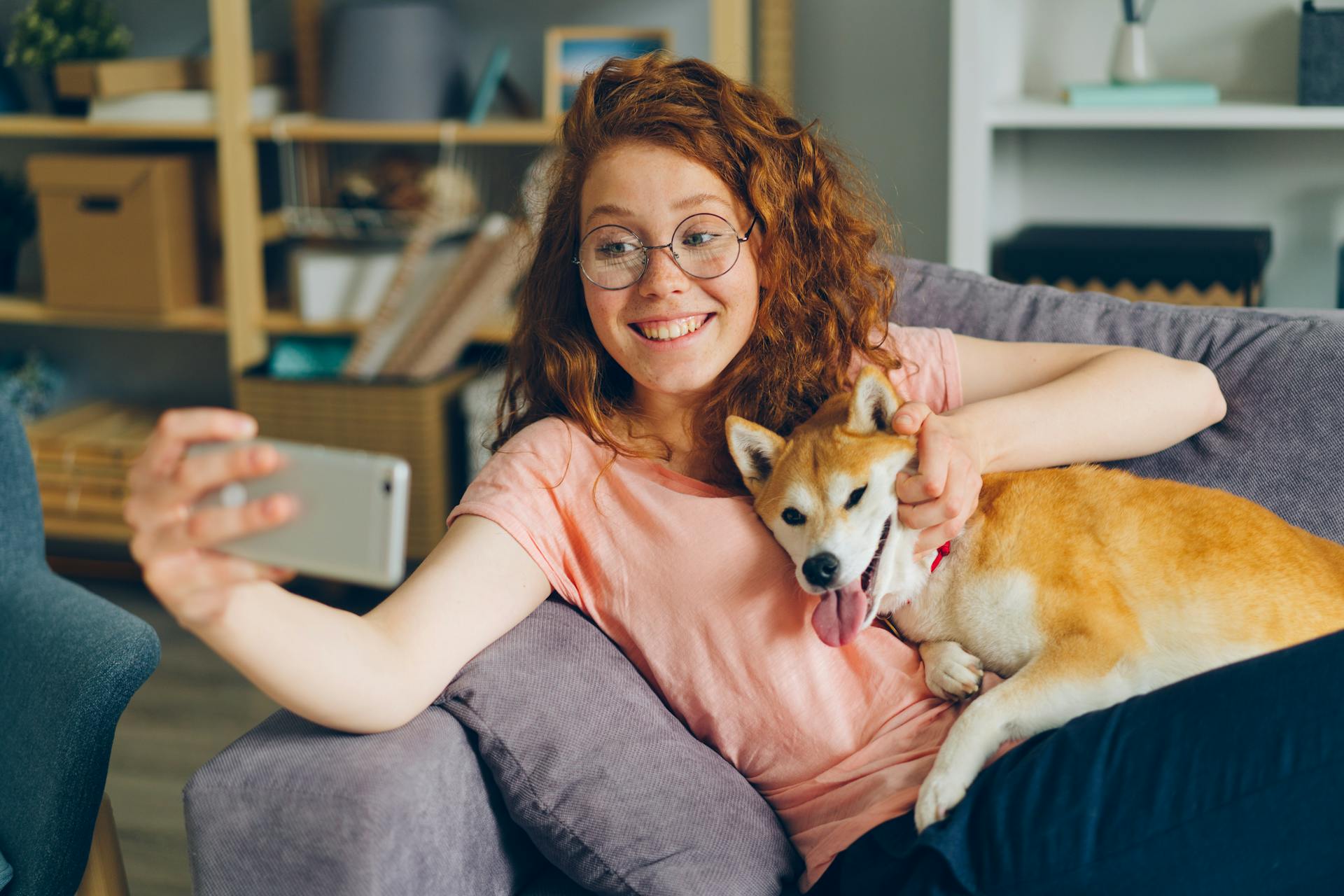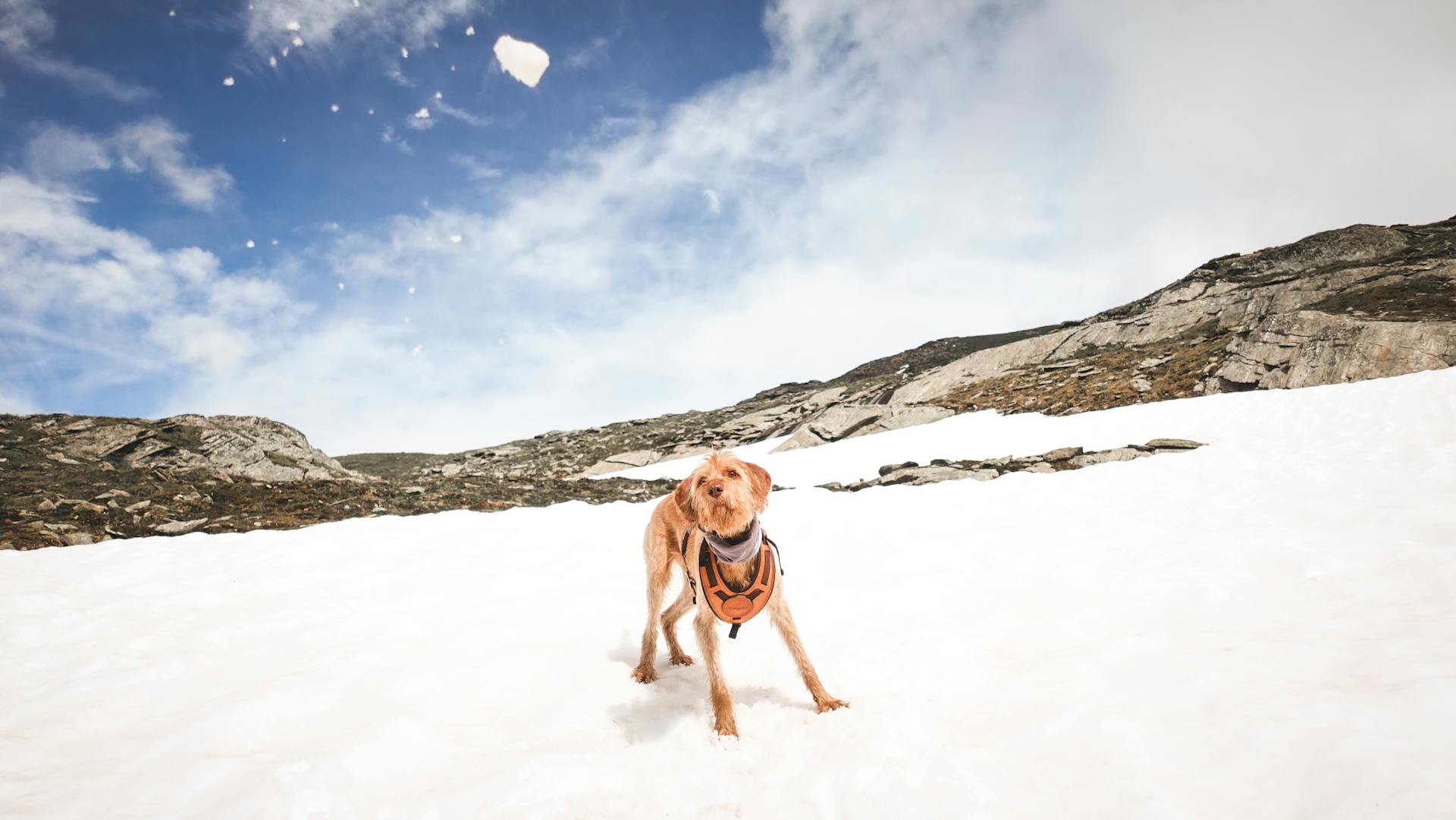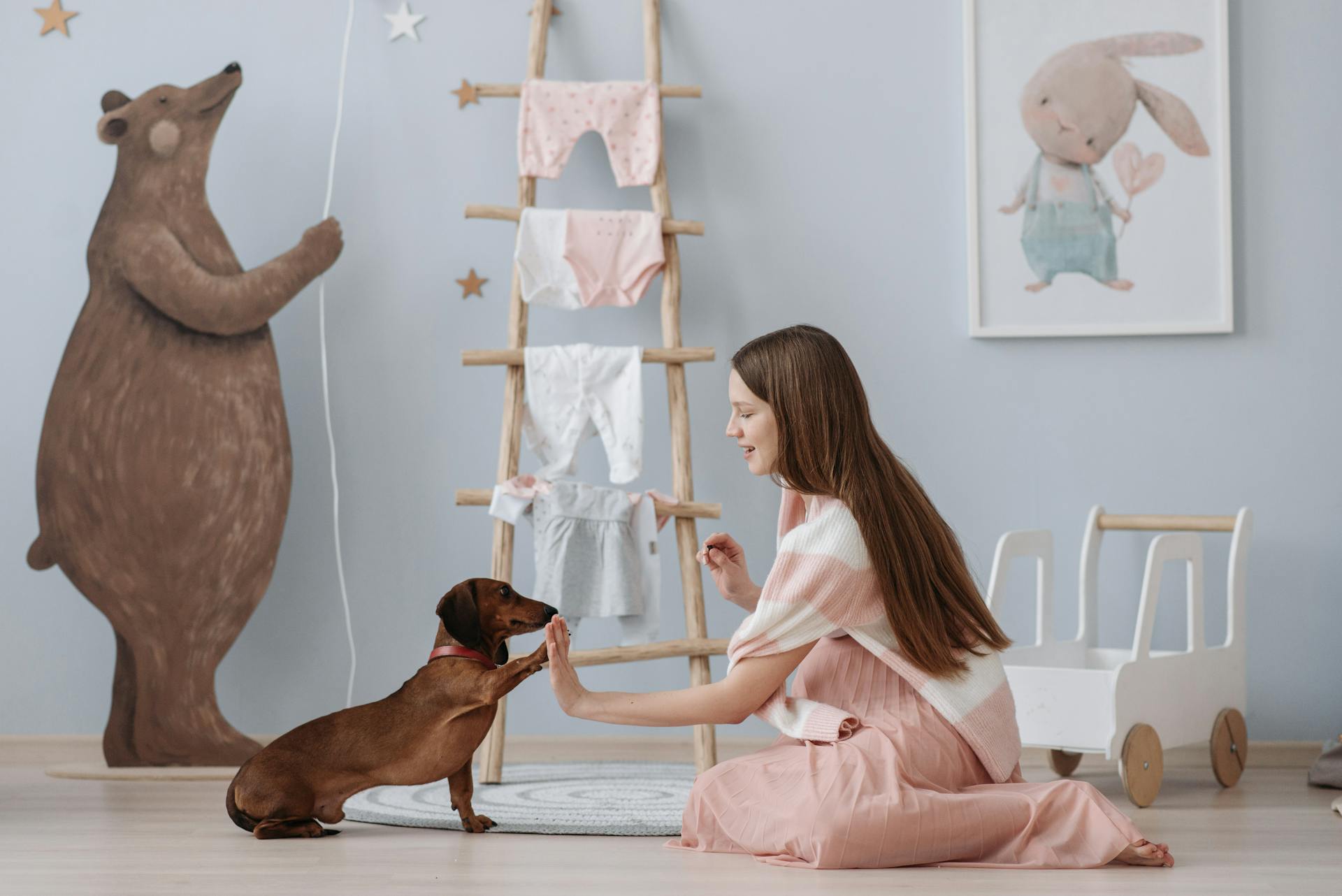
Owning a Shiba Inu can be a wonderful experience for a family, but it's essential to consider their unique needs and characteristics. Shiba Inus are a relatively small breed, weighing between 15-25 pounds and standing about 13-17 inches tall.
They are an ancient breed, with a history dating back over 3,000 years to Japan. Their independent nature can make them challenging to train, requiring patient and consistent owners.
Shiba Inus are known for their strong prey drive and high energy levels, making them a great fit for families with children who love to play and be active. They require regular exercise, such as daily walks and playtime, to keep them happy and healthy.
A Shiba Inu's thick double coat requires regular grooming, including brushing and occasional bathing.
Shiba Inu Care
As a Shiba Inu owner, you'll want to make sure your furry friend gets plenty of exercise. The Shiba Inu needs a daily workout, either in the form of active games, long walks, or off-leash runs in a securely fenced area.
To keep your Shiba happy and healthy, it's also essential to provide mental challenges through games and agility work. This will help keep your dog's mind active and engaged.
The Shiba's coat requires some maintenance, but it's relatively low-maintenance. The top coat is stiff and stands off from the body, and it should be brushed occasionally. However, the undercoat sheds profusely twice a year, during which time daily brushing is needed to prevent matting.
Here are some key facts about the Shiba Inu's physical characteristics and needs:
- Height at withers: 13.5–16.5 inches (34–42 cm)
- Weight: 17–23 pounds (8–11 kg)
- Lifespan: 13–16 years
Care and Upkeep
Shiba Inus need a daily workout, whether it's a long walk, off-leash run, or active game. They require at least 40-60 minutes of exercise every day.
Their mental health is just as important as their physical health, so provide them with mental challenges like games and agility work. Shibas are intelligent and can be trained with positive reinforcement.
A securely fenced yard is a must, as Shibas are expert escape artists. They prefer cooler weather but can adapt to warmer temperatures.
Their coat requires regular attention, with weekly brushing to prevent tangles and matting. During shedding season, daily brushing is necessary to remove dead hair.
Here are some essential grooming tips:
- Brush their coat weekly to prevent tangles and matting.
- Use a hair dryer or dog-appropriate vacuum to remove dead hair during shedding season.
Shibas are generally healthy, but allergies and patellar luxation are common issues. Keep an eye out for signs of these conditions, and consult a veterinarian if you notice any unusual behavior.
Regular oral hygiene and ear checks are also crucial to prevent tooth and gum issues, as well as ear infections.
Nutrition
Your Shiba Inu's nutrition plan should be tailored to their small but active nature to help them maintain a healthy weight.
Shibas are known to be very food motivated, so it's essential to choose good quality food in the right sized portions to avoid overfeeding and maintain their characteristic compact body shape.
A balanced diet of good quality, dry dog food that contains all the necessary minerals and proteins is perfect for your Shiba Inu.
Additional reading: Are Anatolian Shepherds Good Guard Dogs
To ensure you're feeding your Shiba Inu correctly, it's best to measure out their food to avoid overfeeding.
Here are some key points to keep in mind when feeding your Shiba Inu:
- Choose good quality food in the right sized portions.
- Avoid overfeeding to maintain a healthy weight and compact body shape.
- Opt for a balanced diet of dry dog food with all the necessary minerals and proteins.
Shiba Inu Characteristics
Shiba Inus are very confident dogs, known for their alert and lively personalities. They form strong bonds with their owners.
Their strong prey drive and hunting instinct means they're best kept on a lead, particularly when in the presence of wildlife. This is crucial to prevent any potential problems.
Shibas are generally good-natured and playful, but can be quite independent and territorial. They're not the best choice for first-time owners or families with young children who might test their impatient side.
A Shiba Inu's communication style is quite unique - they yodel when they want attention, make a purring sound when being stroked, and even let out a high-pitched scream when excited.
Temperament & Personality
The Shiba Inu is a confident dog with a strong sense of humor, often entertaining with its inventive mischief. They can be quite independent and stubborn, making training a challenge.
Shibas are highly intelligent, but their independent nature can lead to a strong will and a tendency to disobey commands without question. This is why setting boundaries early is crucial to establish a clear hierarchy in the home.
A survey of experts classified the Shiba Inu as having 'high aggression, high reactivity, and medium trainability', which suggests that they require a lot of exercise and stimulation to prevent anxiety. Insufficient exercise can lead to undesirable behaviors, such as the 'shiba scream'.
Shibas are generally good-natured and love being involved in everything around the home, making them loyal and loving companions. However, their dominant side can become a problem if left unchecked.
Some peculiar forms of communication in Shibas include yodeling when they want attention and making a purring sound when being stroked. They're also known for a high-pitched scream when they become excited.
Here are some key characteristics of the Shiba Inu temperament:
- Alert and loyal
- Independent and territorial
- Strong hunting instinct and prey drive
- Stubborn and strong-willed
- Vocal, with a tendency to yodel and scream
Shibas are best kept on a lead, particularly when in the presence of wildlife, due to their strong prey drive and hunting instinct. They're not the best choice for first-time owners or families with young children who might test their impatient side.
Additional reading: When Is It Best to Breed a Dog
Appearance
The Shiba Inu's compact body frame is a result of well-developed muscles.
Their double coat is a distinctive feature, with a stiff and straight outer coat and a soft and thick undercoat.
Guard hairs stand off the body, repelling rain or snow, and are about 1.5 to 2 inches long at the withers.
The Shiba Inu's tail hair is slightly longer and stands open in a brush, making their tails a defining characteristic.
A defining characteristic of the Shiba Inu is their tail, which is a key identifier of the breed.
The urajiro markings are required in specific areas on all coat colors, including the sides of the muzzle, cheeks, inside the ears, and under the jaw.
Here are the specific areas where urajiro markings are required:
- Sides of the muzzle
- Cheeks
- Inside the ears
- Under the jaw and upper throat
- Inside of legs
- Abdomen
- Around the vent
- Ventral side of the tail
A cream-colored coat is considered a major fault by the Japan Kennel Club and American Kennel Club, as the required urajiro markings are not visible.
Take a look at this: American Kennel Club Lancashire Heeler
Shiba Inu History and Health
The Shiba Inu has a rich history that dates back to the prehistoric Jōmon period of Japanese history. Dogs with a similar appearance to the Shiba Inu were represented in dogū made during this time.
The breed was originally bred to hunt small game in the mountainous areas of the Chūbu region. From 1912 to 1926, almost no pure Shiba remained due to the importation of western dog breeds and cross-breeding with native Japanese breeds.
Despite efforts to preserve the breed, the Shiba nearly became extinct during World War II due to wartime food shortages and outbreaks of distemper. The breed was saved by breeding from the only three surviving bloodlines: the Shinshu Shiba, the Mino Shiba, and the San'in Shiba.
The Shiba Inu has also had its fair share of health issues. A study in Japan found that 35% of Shiba Inus surveyed were affected by patella luxation, a condition where the kneecap slips out of place.
Related reading: Shiba Inu All Time High Market Cap
Japanese Dog
Getting a Japanese dog can be a challenge, especially if you're not in Japan. It's harder to get a Japanese dog outside of Japan, so many people come to Japan with the hope of picking one up.
Exporting a Japanese dog from Japan has its own set of challenges. Not all breeders will export certain Japanese dog breeds because they're considered 'national treasures'.
You'll need to consider the cost of a dog in Japan, which varies depending on the age of the pup. Younger pups (2 months old) are generally cheaper than older pups.
Preparing to export a dog from Japan comes with additional costs, including vaccinations/microchip, dog crate, kenneling fees, export pedigree, Animal Quarantine Inspection, and other costs.
Shipping a dog from Japan can be expensive, with pet fees sometimes exceeding $200. Be sure to check with your airline to see if they ship pets and what the associated fees are.
You'll also need to know the import laws for your country, as some countries require a rabies vaccination and a 21-day quarantine period in Japan.
Suggestion: Akitas in Japan
Japanese Dog Names
Japanese dog names are a fun and creative part of the pet-owning experience. You can find dogs named anything from Ryuu to Lucky to Sausage in Japan.
In Japan, dog owners often choose names that reflect their pet's appearance, personality, or breed. For example, a Shiba Inu might be named Ryuu, which means "dragon" in Japanese.
Japanese dog breeds are known for their unique characteristics, and their names often reflect that. Whether you're looking for a small, fluffy dog or a larger, smoother breed, there's a Japanese dog name out there for you.
Naming your Japanese dog can be a fun and exciting process, especially if you're looking for a name that reflects your pet's heritage.
Additional reading: Japanese Shiba Inu Names
History
The Shiba Inu has a rich and fascinating history that spans thousands of years. They were first bred to hunt small game in the mountainous areas of Japan's Chūbu region.
The breed's origins date back to the prehistoric Jōmon period, where dogs with similar appearances to the Shiba Inu were represented in dogū.
The Shiba Inu was nearly extinct after World War II due to wartime food shortages and outbreaks of distemper in the 1950s and 60s.
Only three pure Shiba bloodlines survived: the Shinshu Shiba, the Mino Shiba, and the San'in Shiba.
The Shinshu Shibas were small and red in color, while the Mino Shibas had thick, prick ears and a sickle tail.
The San'in Shibas were larger and tended to be black.
In 1934, the first Japanese breed standard for the Shiba Inu, the Nippo Standard, was published.
Health
The Shiba Inu's health is a topic that requires attention, especially for potential owners. The breed is prone to patella luxation, a condition where the kneecap slips out of place, with a staggering 35% of Shiba Inus surveyed being affected.
One of the most concerning health issues in Shiba Inus is glaucoma, a condition that can lead to blindness if left untreated. In fact, a study found that 33% of all glaucoma cases in dogs were Shiba Inus, despite making up only 2.7% of the population studied.
Intact female Shiba Inus are also at a higher risk of developing pyometra, a uterine infection that can be life-threatening if not treated promptly. This is a serious condition that requires immediate veterinary attention.
Canine atopic dermatitis, an autoimmune disease that causes skin allergies and irritation, is also common in Shiba Inus. This condition can cause discomfort and distress for the dog, and may require ongoing treatment and management.
Vogt-Koyanagi-Harada-like syndrome, an autoimmune disease, has also been identified in Shiba Inus. This condition affects the dog's skin, eyes, and other organs, and requires careful management to prevent complications.
Lifespan
The Shiba Inu's lifespan is quite impressive. A review of cemetery data in Japan found that the breed has a life expectancy of 15 and a half years, which is greater than any other breed.
This is significantly longer than the average lifespan of purebred dogs, which is around 12.7 years. A 2024 UK study found that Shiba Inus live to be 14.6 years on average, making them a relatively long-lived breed.
Curious to learn more? Check out: 100 Years Ago Original Boston Terrier
Sanin
The Sanin Shiba Inu is a breed that originated from the Inaba Inu of Tottori Prefecture and the Sekishu Inu of Shimane Prefecture.
These two breeds were in danger of disappearing due to the rise of Western dogs.
The preservation breeding efforts started by Masumi Ozaki, a former landowner in Tottori prefecture, helped to prevent the loss of local breeds.
However, World War II made it difficult to maintain the breeding projects, and the number of dogs decreased from 50 to 20 due to their use for fur by the military.
In 1947, the Inaba Inu and Sekishu Inu were bred together to create the foundation stock of the Sanin Shiba Inu.
The Ozaki family continued to protect and preserve the breed, despite the challenges they faced.
The breed faced further threats in the 1950s and 60s, including two outbreaks of distemper that killed many dogs in Tottori prefecture.
The Great Tottori Fire also discouraged preservation efforts, making it even harder to save the breed.
Suggestion: Sanin Shiba Inu
Shiba Inu in Society
The Shiba Inu is a beloved breed in Japan, where they're often considered a national treasure.
Shiba Inus have a unique ability to thrive in small living spaces, making them a great fit for city dwellers.
They're highly intelligent dogs that require regular exercise and mental stimulation to prevent boredom and destructive behavior.
In fact, Shiba Inus need at least 30 minutes of exercise per day to stay happy and healthy.
Their independent nature can sometimes make training challenging, but consistency and positive reinforcement can go a long way.
Shiba Inus are naturally wary of strangers and may take time to warm up to new people and environments.
However, with patience and socialization, they can become confident and friendly companions.
Their strong prey drive can make them a great fit for families with cats, as long as the cats are willing to put up with their energetic playstyle.
Shiba Inus are generally quiet dogs, but they do have a distinctive howl that can be music to the ears of their owners.
Readers also liked: Shiba Inu Exercise Needs
Preparing to Bring Home a Shiba Inu
A Shiba Inu will make a great canine companion for the right owner, but it's essential to consider their unique needs and personality traits.
Shibas form a strong bond with their owners and love being part of everything that goes on around the home, making them a loyal and loving companion.
However, they are notoriously independent and have a stubborn nature, which means they are best suited to experienced owners and families with older children.
Establishing an alpha role early in your relationship with your Shiba Inu is crucial to avoid any behavioral issues.
These expert escape artists will test your boundaries, so it's essential to make sure that any gardens are fully secure.
To keep your Shiba Inu happy and healthy, aim for 40-60 minutes of exercise each day, with plenty of opportunities for mental stimulation to avoid boredom.
With a thick, double coat that sheds throughout the year, be prepared for regular grooming and cleaning up excess hair around your home.
A different take: Shiba Inu Owners
Here are some key things to consider when preparing to bring a Shiba Inu home:
- Make sure you have plenty of time for exercise and mental stimulation
- Choose a reputable breeder who follows the law (you can't buy from third-party sellers)
- Be prepared for regular grooming and cleaning up excess hair
- Ensure your home is secure and escape-proof
- Consider whether a Shiba Inu is the right pet for you and your family
Frequently Asked Questions
Are Akita and Shiba Inu the same family?
Akita and Shiba Inu are related breeds, belonging to the same group of native Japanese dogs known as the Nihon Ken. They share a common ancestry, but have distinct characteristics and histories.
Featured Images: pexels.com


